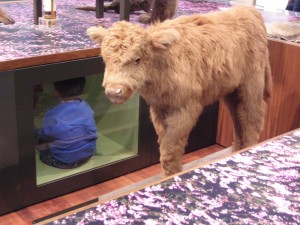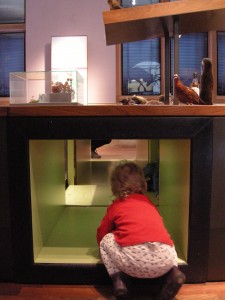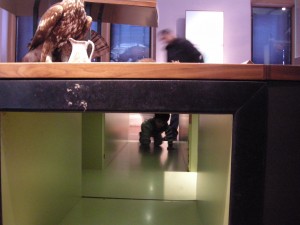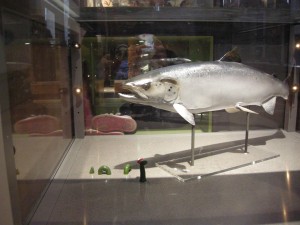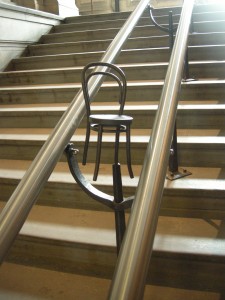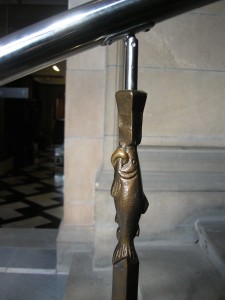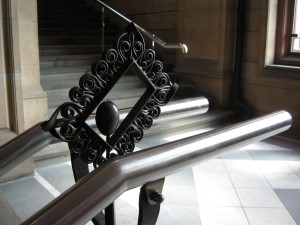A key part of Exhibition Explorers at the Shipley has been exploring the gallery environment with the children. Hopefully over the course of the project all the grown ups involved – both parents and staff – will understand better what a gallery visit looks like to small children. During the sessions we’ve done lots of exploring the artworks on display; but equally important has been exploring the gallery environment in general, and discovering that the floor tiles, toilets, big steps and spaces underneath display cases are just as fascinating to the children as the artwork itself. The more we understand children’s interests and see the gallery from their perspective, the more insightful we can be about early cultural experiences, and the more positive these will be all round.
On a recent visit to the Kelvingrove Museum and Art Gallery, I couldn’t help but imagine how the Shipley’s little Exhibition Explorers would respond to the environment. Here are a two aspects of the visit that caught my eye as brilliant examples of an Exhibition Explorer-friendly museum:
1. Display cases with a difference:
The exhibition about Scottish wildlife includes plinth-style display cases with tunnels built inside them. These allow children to explore beneath the diplay’s surface, viewing some of the creatures up close and from different angles. In addition, they can explore the gallery space in new ways, finding those appealing child-only dens, and inhabiting cosy spaces in an otherwise vast museum environment.
Without fail, children entering this part of the museum were magnetically drawn to these tunnels. I was also amused to see how the children become part of the display – for a moment, the Highland Cow below looks like it’s strolling through the gallery, and it’s the child who’s on display!
2. Details at child height:
Going up the stairs, I noticed these metal casts depicting details of the museum collection. Positioned at children’s eye level, they are pleasing details that the youngest Exhibition Explorers can spot. Many adults were missing them, making the experience of spotting them a particularly exciting experience for young visitors.
Seeing how young children interact with these details, it’s clear that the little things make a big difference to a family friendly museum experience. Our next Exhibition Explorers session takes place this week, by which time we’ll be half way through the project. I can’t wait to hear about the Family Adventures to museums and galleries that have been embarked on since we last met – watch this space!
